Tehran Briefly
Tehran's Weather
The weather in Tehran can be described as mild and windy, with occasional showers, in the spring and autumn, hot and dry during the summer, and cold with rain and snow in the winter. Due to elevation between the southern and northern parts, the weather is usually considerably cooler in northern districts
Education System
Tehran is the educational and scientific center of Iran. Many of the most prestigious universities in Iran are located in different parts of the city. Among them, we can name Tehran University of Medical Sciences, University of Tehran, Sharif University of Technologies, Shahid Beheshti University, Allameh Tabataba'i University, and Amir kabir University of Technology. Moreover, many large and fully equipped libraries, research centers and laboratories, affiliated with universities and government organizations are actively passing the boundaries of human knowledge towards newer horizons.
Transportation System
Tehran possesses an effective, though crowded, transportation system. Firstly, there is a five-line subway system which covers a great part of the city. In addition, city transportation enjoys a bus rapid transit (BRT) system, parts of which are active 24/7. Moreover, all around the city, you can find taxi and bus stations which can get you to your desired destinations. Traveling around Tehran can be a bit challenging at first, but once you determine your everyday destinations and find the relevant routes, you will have no trouble moving from place to place.
Tehran's Landmarks
There are two important landmarks in Tehran. The first is the Azadi (Liberty) Tower. Completed in 1971 with a height of 45 meters (148 ft), the Azadi Tower, standing in the center of Azadi Square and marking the western entrance to the city, has long been considered as the symbol of the capital. This tower houses a library, a museum, a ceremonial hall, and a café. The second important structure of Tehran, looking over the entire city with a height of 435 meters (1427 ft), is the Milad Tower. This tower, visible from all areas around the city were built in 2007 and are the sixth tallest tower and the 17th tallest freestanding structure in the world. The head of the tower, a gigantic steel structure with 12 floors, consists of a closed observation deck, a cafeteria, a public art gallery, an open observation deck, a revolving restaurant, a VIP restaurant, and a skydome
Tehran's Attractions:
As well as being the political and educational capital of Iran, Tehran also possesses some of the most important tourist attractions of the Iran. Among the most important tourist sites located in Tehran , we can count the National Museum of Iran, Saad Abad Palace, Niavaran Palace, Golestan Palace, Tochal Ski Resort, Tehran Museum of Contemporary Art, the Imperial Crown Jewels of Persia which is on display in the Iranian Central Bank, and many other parks, recreation complexes and museums. Milad Tower, The Nature Bridge (Taabiat Bridge,Bam Land (recreation and rest at the coast of Chitgar Lake), Saint Sarkis Cathedral (the largest cathedral in Tehran), Darakeh (Tehran's best resort for mountain climbing), Darband (a beautiful resort for hiking beside mountains and a splendid waterfall),The Grand Bazaar of Tehran,and Adrian Fire Temple …
Azadi Tower
Standing guard like a sentry at the gates of Tehran, Iran, is the impressive Azadi Tower (Freedom Tower). Azadi Tower built in 1971 and comprised of eight thousand white marble blocks. A combination of both Islamic and Sassanid architectural styles, the fifty-foot-high tower commemorates the formation of the Persian Empire and is an interesting combination of both modern and ancient cultures. The architect, Hossein Amanat, won a competition to design the monument, which combines elements of Sassanid and Islamic architecture. It is part of the Azadi cultural complex, located in Tehran's Azadi Square in an area of some 50,000 m². There are several fountains around the base of the tower and a museum underground
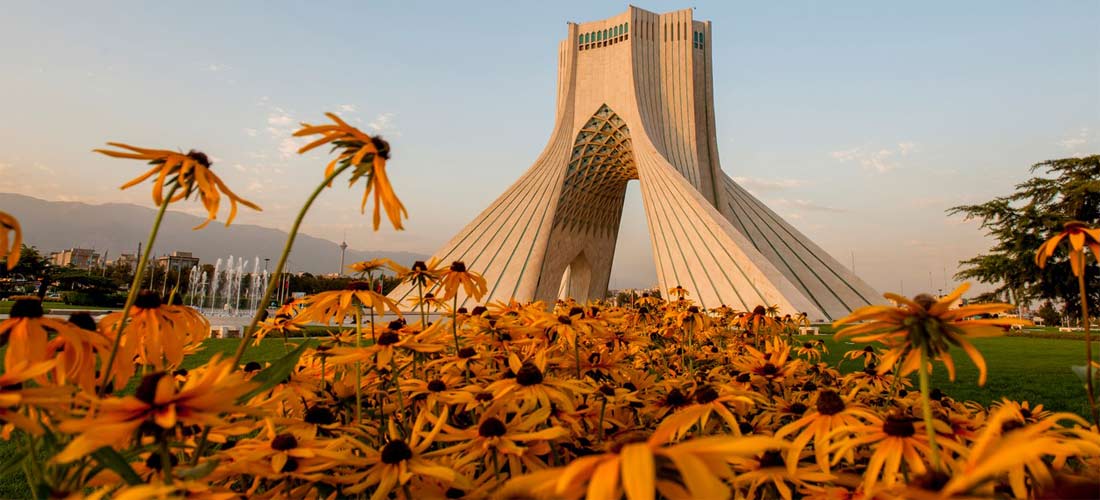
Milad Tower
Milad Tower became a new symbol of Tehran right after its construction. It is a multipurpose building, proudly standing on the north of Tehran and visible from almost every part of the city. Milad tower is the 6th tallest tower in the world and the tallest building in Tehran. It provides not only a bird’s-eye view of the city but also some business activities and entertainment events. Milad Tower is 435 meters long. The construction took 11 years, headed by Iranian architect Mohammad Reza Hafezi. As a result, the tower was officially opened on February 20, 2009, by the mayor of Tehran in front of 250 journalists from all over the world. The tower includes 5 parts, which are the foundation, entrance lobby, shaft, head structure, and antenna. The lobby consists of 6 floors and includes trade units, exhibition halls, and food courts. Six elevators bring visitors along a concrete shaft to the upper floors at the speed of 7 meters per second. The head of the tower consists of 12 floors. Antenna hosts Islamic Republic of Iran Broadcasting and private antennas
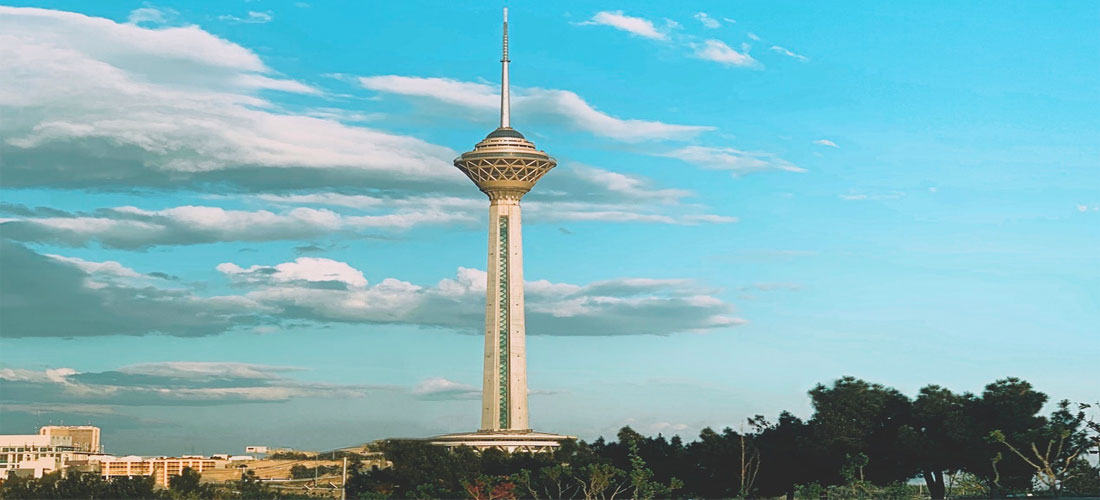
Museum of Contemporary Art
You may have thought of Iran as a country with a long glorious history and astonishing architectures. Well, it’s true! But you can’t ignore the fantastic artworks of contemporary Iranian artists. Tehran Museum of Contemporary Art is on the west side of Laleh Park and if you are nearby, you have to visit this museum. First of all, it has 3000 items from the 19th and 20th century European and American modern art. This is one of the ten valuable modern art collections in the world, so, as you can see this is not an ordinary collection. Second of all, there are artworks from modern art leaders like Picasso, Gauguin, Renoir, and Pollock to name a few. No one ever exactly calculates the true value of the museum pieces, but it is said that there is approximately £2.5 billion worth of modern art held at the museum. The museum displays these art collections in terms of different exhibitions. Also, there is always a temporary exhibition, mostly the works of Iranian Artists held in the museum. You have the opportunity to see one of the most valuable collections of Western modern art outside Europe and the United States. Hence, don’t miss visiting this great museum
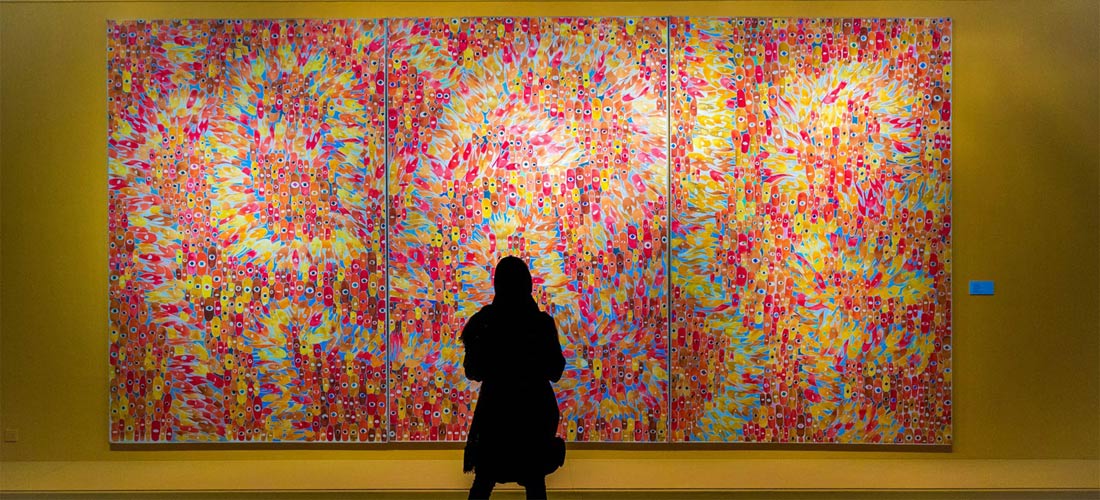
National Jewelry Museum
Your eyes are gonna be wide, your jaw will drop, and you may not be able to move! That’s your reaction when you visit the National Jewelry Museum in Tehran. Don’t underestimate it is an ordinary museum, in fact, it is one of the top 10 jewelry museums in the world. Ready to see some valuable rubies, precious gemstones, priceless crowns, and tiaras? Stay with us and we will show you why you should definitely put the National Jewelry Museum of Iran on your MUST SEE list. It’s definitely one of the best museums that you will find in Iran. You don’t want to miss the chance of watching these amazing, breath-taking, and priceless jewelry, do you?! National Jewelry Museum is located in Ferdowsi Street, and it’s in the basement of Central Bank of Iran building. This treasury is one of its best kind; hence, you have to go through some security check first. Also, keep in mind that you cannot bring any object to the museum. After climbing down some stairs and going through a huge security door, you will enter the treasury. First, there is the magnificent Peacock Throne which you cannot take your eyes off it. But you would better do because there are so many fantastic items to see in this museum, and unfortunately, you have limited time. When you enter the main hall, there are museum guides who will explain each vitrine and its objects to you. And don’t worry; they can speak English, German, French, and Arabic. Valuable rubies, precious gemstones, priceless crowns and tiaras (literally, no one can examine how much they are worth), countless diamonds, expensive swords and shields decorated with jewel are few examples of what you will see in the museum. Also, you will find the Sea of Light Diamond (Darya-ye Noor), the most famous object of the museum in the middle of the place

Iran National Museum
National Museum of Iran is the first choice of travelers, who have an interest in archeology and history, and the main museum of Tehran. The exposition of the museum covers the history of Iran from the Paleolithic to Qajar period. Thus visitors of the museum can follow up the whole history of Iran – from Stone Age to the 20th century. Due to the location in the center of the old part of Tehran, it is easy to include the museum to a daily Tehran tour. National Museum of Iran consists of two buildings, built one after each other. The first building of the Museum of Ancient Iran with the impressive arch-shaped entrance is a creation of French architects André Godard and Maxime Siroux. The project draws inspiration from Sassanian architecture, uses red bricks and takes an area of 11 000 sq.m. The construction started in 1935, and the museum started operation in 1937. The building of the Museum of Islamic Era, on the other hand, has a modern design, using white travertine and dark colonnades, decorating the entrance. This exposition started working after the Islamic Revolution in 1979. Museum of Ancient Iran has a focus on archeological artifacts and presents a wide range of ancient relics. Accordingly, artifacts come from Shush, Rey, Ismailabad, Persepolis, Turang Tappeh and other places, where pieces of evidence of ancient civilizations were found. The collection includes stone tools, which belong to Stone Age and are more than 30 000 years old. Also here visitors can observe a copy of Babylonian Code of Hammurabi – the world’s first legislation. Probably the most shocking and exciting item of the exhibition – Salt Man from Zanjan. It is a salt-cured mummy, found in a salt mine of Chehrabad. Moreover, there are statues, manuscripts, pottery, and other items on the display. Museum of Islamic Era presents pottery, textile, artworks, texts and calligraphy from the post-classical period of Iran’s history. The newest exhibits belong to Qajar Era
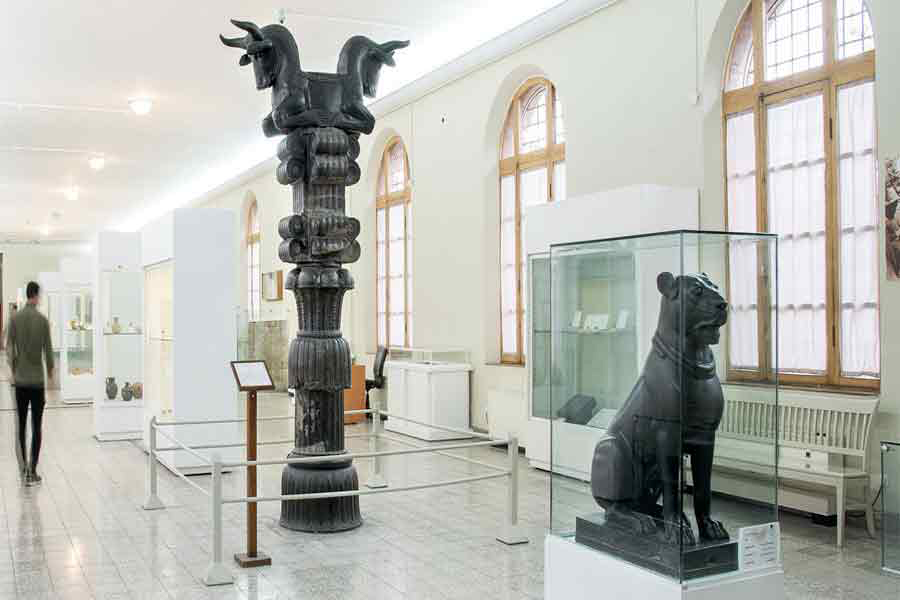
Golestan Palace
A trip to Tehran is impossible to imagine without visiting the oldest historical monument of the city, breathtaking and glorious Golestan Palace. You can’t even describe the palace as a museum – it is striking evidence of the great dynasty majesty. Golestan Palace was nominated for and then granted the title of UNESCO WORLD HERITAGE SITE in 2013. The story of Golestan Palace starts with the construction of Tehran Arg in the 16th century during Safavid Era. Thatched mud walls of this citadel were embracing several royal buildings, and Golestan Palace was one of them. The Arg stood through Safavid and Zand dynasties until 1794. Then the first Shah of Qajar Dynasty, Mohammad Khan, chose Tehran as the capital of the Persian Empire. Golestan Palace became the official residence of the Shah, who rebuilt it and supplemented with new buildings. During the Pahlavi era, Golestan Palace acted as a place for official events and receptions. Reza Shah, who strongly believed in Iran modernization and growth, destroyed some of its buildings in between 1925 and 1945. The old looking palace did not match the new appearance of the developing city. However, nowadays we are lucky to witness the remained construction, consisting of 17 buildings, museums, and halls. The palace covers an area of 53000 m2 and displays different periods of the history of Iran. Even though the major part of the palace belongs to the Qajar era, every single corner of the complex looks unique and has its own history to tell. Marble Throne, Brilliant Hall, Ivory Hall, Mirror Hall, Diamond Hall are some of the main points of the palace. While your look is moving from dazzling mirror mosaics to painted domes, you will not notice how time passes. That’s why we recommend to come here right after breakfast and start your day with an unforgettable experience. Except for interior of Golestan Palace, you can also find interest in the Museum of Gifts with some rare artifacts, an exhibition of European paintings in the Pond House and Iranian paintings in the Picture House, and photography archive showing the first experience of using photo cameras inside the walls of Golestan Palace
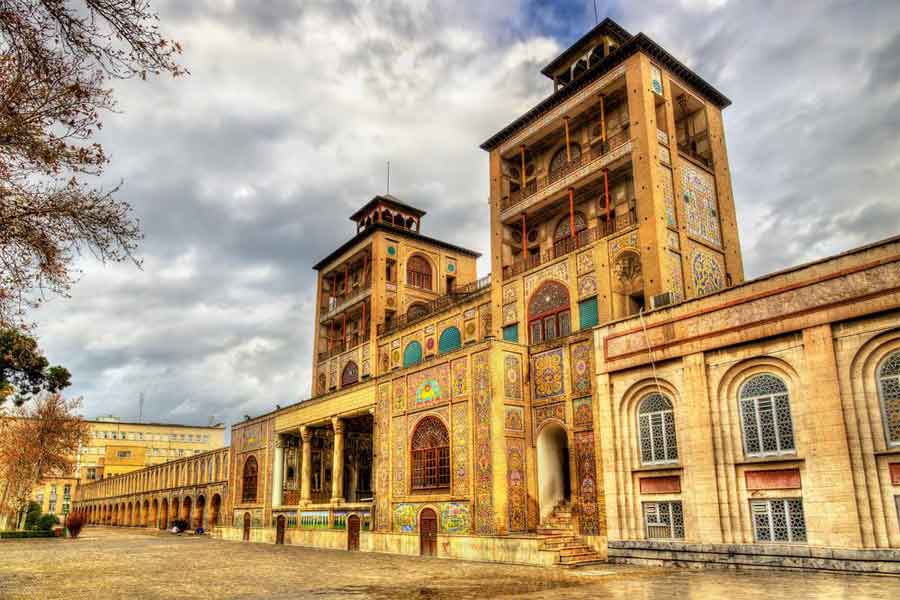
Sa'adabad Palace Complex
Sa’dabad Complex is a majestic museum on the north of Tehran, the prominent heritage of Qajar Era. Built in the 19th century, the complex consists of several palaces, as well as forests, streets, and museums. The general area of the complex is more than 1 sq.km. Museums exposition covers different aspects of Iranian mythology, art, and culture, and is a complex introduction into Iranian history and life of the last Shahs of Iran in 19th and 20th centuries. The complex was constructed in the 19th century and belonged to Qajar era monarchs and their families. In 1920s Shah Reza Pahlavi added some buildings to the complex and used the palace as a summer residence. In the 1970s his son, Mohammad Reza Pahlavi, moved there. In 1979, after the Islamic Revolution, the complex became a museum. Iranian Cultural Heritage Organization operates and maintains the complex. The complex includes 18 buildings, 10 of them are opened for public. 4 of the buildings are at the disposal of the presidency organization, 3 buildings host administration of the complex. Two most noteworthy buildings are White Palace (Palace of the Nation) and Green Palace (Shahvand Palace). White Palace was built in the early 1930s by Reza Pahlavi and served as a summer residence. Outside the building, there is a piece left of Shah Reza’s monument. Now the palace displays furniture, decorations, paintings, and carpets in the same state as they were during the reign of Shah Reza. Green Palace was built during the last years of the Qajar era and rebuilt by Shah Reza. He used it as a residence for his guests and a place for receptions. Green Palace shows more classical decoration and architecture, with the luxury of mirror mosaics and carpets. Other buildings of the complex are various museums. Here you can enjoy works of art from different places of the world, oil paintings of Safavid, Afshar, Zand, and Qajar periods, Hossein Behzad and Klara Abkar painted miniatures and Iranian calligraphy. Other museums introduce luxury cars, royal clothes, Iranian military outfits of different periods and Iranian lifestyle and agriculture
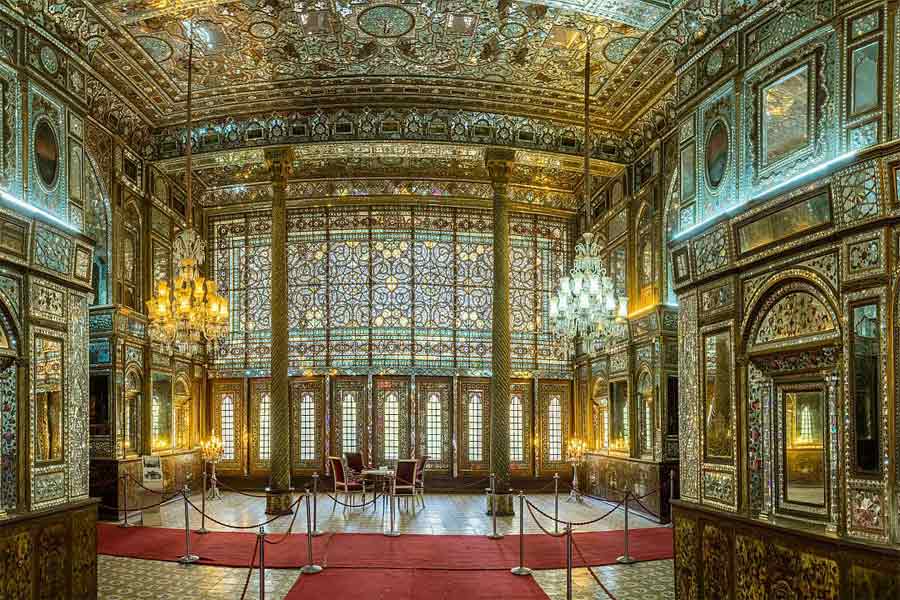
Niavaran Palace Complex
Located in one of the high-class neighborhoods of Tehran, Niavaran Palace Complex is a building that once belonged to the royal family of Qajar. This oasis complex is consists of several parts including palaces, museums, and garden. Read more about this complex to find out why you should definitely visit this place. Qajar kings had a pleasure-loving attitude, so they built several great palaces in their capital, Tehran. So, Fathali Shah ordered to build a palace in this garden. But in 1985, Mohammad Reza Shah decided to build a brand new palace instead of the old one. At first, this palace was used to welcome foreign visitors, but eventually, the Pahlavi Family took the residence. During the years, other parts were added to the complex. Like any other royal palace in Iran, Niaravan Palace Complex has breath-taking architecture and decoration. You cannot take your eyes off the ceiling and walls. They worked with the best artists from Iran to design this palace. They used delicate stuccos, mirror-works, and Qashani to decorate this palace. Sahebgharanieh Palace, Niavaran Palace and Koshk-e Ahmad Shahi (Koshk is a type of pavilion) are three main palaces in Niavaran Complex. In the western part of Sahebghanieh Palace, you will find the Jahan Nama Museum. In this museum, you can see valuable objects from all over the world that had been dedicated to Pahlavi Family. Also, there are other belongings that they bought themselves. But these are not the only interesting things to see in this complex. You may find Shah Executive Car Museum quite interesting! You have the chance to see beautiful classic cars that once belonged to the Royal Family. Although there are not a lot of cars in this museum, you will find these vintage cars fascinating. Who doesn’t like to see old versions of Rolls-Royce? Or even toy samples of Aston Martin that were especially tailor-made for little members of the Royal Family? Also, there are some photographs of the Pahlavi Family with these cars. Royal Library Museum is one of the other sections of Niavaran Complex. This library belonged to Farah Pahlavi. The building interior design with the modern architecture of that time is unique in its kind. They used this place not only as a library, but a place to enjoy music and displaying artworks such as paintings, furniture, and sculptures. Finally, as you are ambling through the green space of Niavaean Complex, you can visit the Inscription Garden Museum. In this museum, you will find inscription Moulages from ancient times of Persia. Well, you may not be able to see the original copy of these inscriptions, but you can easily see their identical copies here. Not to mention that some of these items have 15000 years old

Nature Bridge (Tabiat Bridge) and Ab-o Atash Park
Ab-o Atash Park is, undoubtedly, the most popular park among Iranians and foreign visitors of Tehran. Due to its unique design, modern facilities, spacious walking area, and variety of cafes, this park is a favorite place for meetings among people of all generations. The most prominent feature of the park – composition of fountain and fire-towers, illustrating the name of the park. No less attention is paid to Tabiat Bridge – an outstanding architectural object, decorating the park. Ab-o Atash park takes an area of 24 000 sq.m. It is connected with Taleqani Forest Park with Tabiat Bridge (on the east) and Nowrooz Bark with Abrisham Bridge (on the south). The main entrance is located in the northern part of the park and combines spacious stairs with green areas. The name Ab-o Atash in Farsi language means “water and fire”. It is believed, that when Prophet Abraham (in Persian – Ebrahim) was thrown into the fire, God saved him with words: “O fire, be coolness and safety upon Abraham”. The story of Prophet Ebrahim is written on metal monuments, decorating the park. In the northern part of the park, there is an installation, consisting of a fountain and four fire towers. During the show, the towers release fire flames up to 8 meters in height along with the music. Except for original design, the project of the park implements principles of sustainable construction and urban development. It combines natural landscape usage and discreet design to support a nature-friendly approach in city construction.
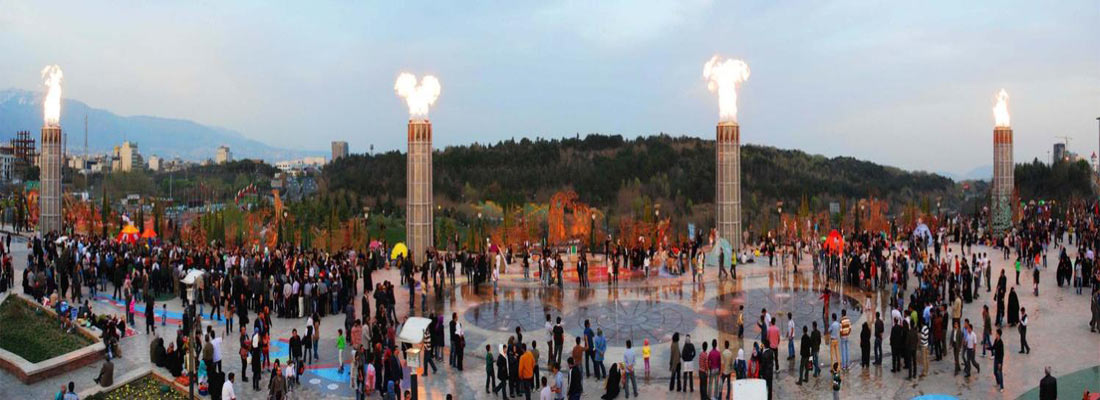
Nature Bridge (Tabiat Bridge)
Tabiat Bridge connects Ab-o Atash Park and Taleqani Forest Park, passing over Modares Highway. The bridge is considered as one of the most prominent bridges of the Middle East. Except for its unique design, the bridge is special because of its eco-friendly project and earthquakes resistance. The bridge consists of 3 floors and is 40 meters in height. On one of its levels, there is a café with a view to Alborz mountains and city center. Tabiat Bridge connects Ab-o Atash Park and Taleqani Forest Park, passing over Modares Highway. The bridge is considered as one of the most prominent bridges of the Middle East. Except for its unique design, the bridge is special because of its eco-friendly project and earthquakes resistance. The bridge consists of 3 floors and is 40 meters in height. On one of its levels, there is a café with a view to Alborz mountains and city center
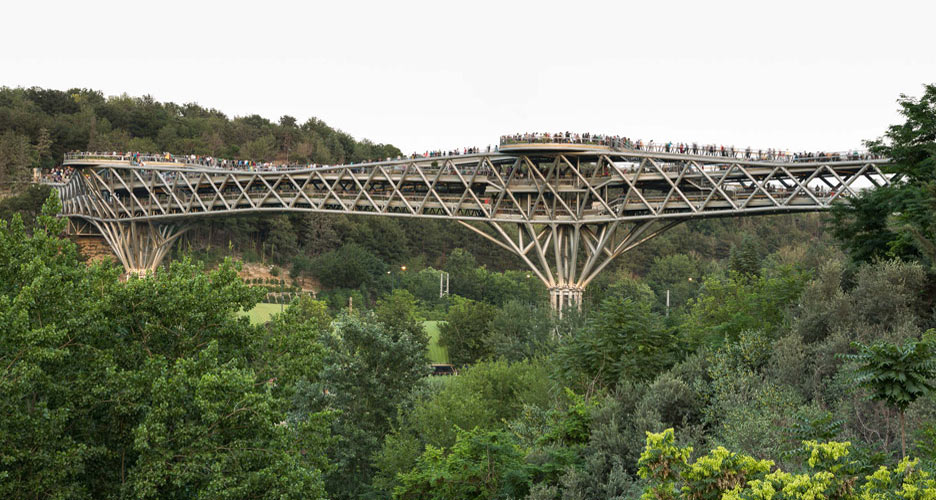
Tajrish Traditional Bazaar
Tajrish Traditional Bazaar is an old, colorful bazaar that gives everyone a sense of walking in old Tehran. Its architecture has been developed over the years. However, the real old texture has been preserved. There are multicolored fruits and vegetables that catches attention. Of course, there are several other things that this bazaar offers for sale. Make sure to have some money in your pockets because you will not leave this bazaar empty-handed! The irresistibly charming commodities are great Persian souvenirs for those you love.Tajrish Traditional Bazaar is in the northern part of Tehran in Shemiran resort. Its location has contributed a lot to its easy access from any part of the city. As a result, you will not have difficulties to get to this beautiful bazaar. Other attractions that you might like visiting while in the region are Sa’adabad Complex, Niavaran Palace Complex, Milad Tower, and Tabiat Bridge. Tajrish Traditional Bazaar is the oldest bazaar in the north of Tehran. It is a small bazaar simulated from Tehran Grand Bazaar. Its construction dates back to 70 years ago. However, some of the old salesmen say that it is 150 years old. Tajrish used to include big houses with gardens, small villages, and summer houses. People used to choose this area for their holidays to enjoy the weather and nature. Some workers used to go there to be of help to garden owners in spring and summer. After a while, they decided to settle down in Tajrish forever. Consequently, the population of Tajrish grew little by little. As Reza Shah Pahlavi chose this area to spend his leisure time, it began to undergo modern developments. The construction of roads and the designation of public transportation facilitated the way for people to visit this region more than before. The gathering of people caused the local people to think of selling the products of their gardens. Hence, there emerged some small shops in Tajrish and what we know today as Tajrish Traditional Bazaar is the developed version of those stores. To avoid the destruction of their commodities and for the sake of the comfort of the people, the salesmen made a decision to build a ceiling over their heads. Later on, the Cultural Heritage and Tourism Organization constructed the fascinating and traditional ceiling and added some other creative decorations of the present bazaar
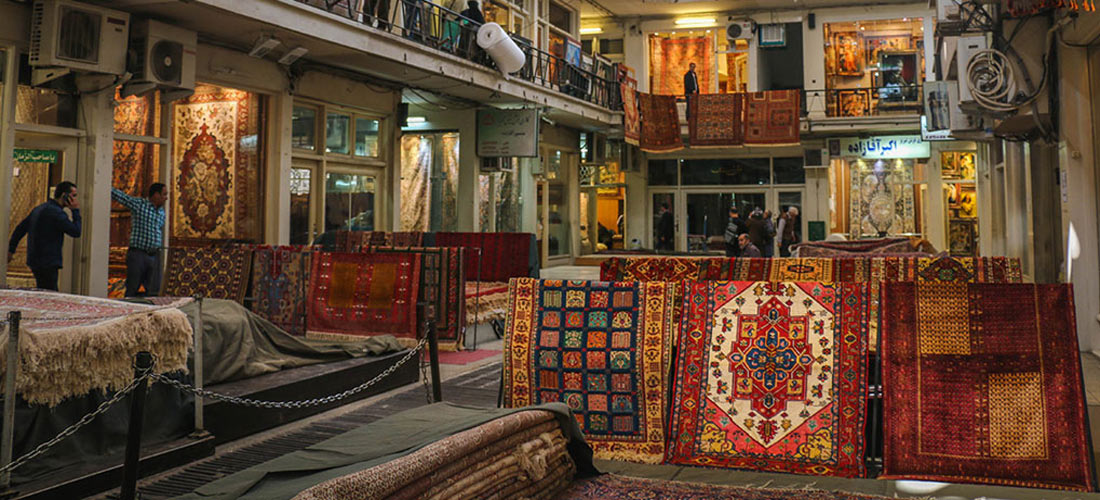
Darband
Darband is one of the famous neighborhoods of north Tehran where so many people go for trekking, having a cup of tea, eating sour and sweet apricots. It is known for its fresh and breezy weather and mountaineers route. Darband is one of the oldest neighborhoods of Tehran. The weather at Darband is fresh and breezy. It is at the start of the hiking trail up to mount Tochal. The popular symbol of Darband for locals and tourists is “Statue Square” (Meidan Mojasame). There is a path starts from the square that contains a variety of activities for visitors. There are so many vendors selling different kinds of sour and sweet apricots, pickled walnuts, and Lavashak (which is compressed dried fruit). They also offer so many snacks, including Kebabs, steamed lima beans, and freshly roasted corn. In case you are looking for something more substantial, you can go to several cafes, tea houses, and restaurants. If you are looking for a place to relax, keep up walking for 10 minutes and you’ll be greeted with plants, natural streams, and some waterfalls. There are platforms with rugs and pillows on it. Where you can enjoy a tea, have different kinds of snacks, or smoke a hookah. It is a suitable place to feel away from the hustle and bustle of Tehran

Vali-e Asr Street
If you are considering dining in the city, you simply have an infinite list of choices. In most city districts, you can find various restaurants, diners and cafés, traditional and modern, offering a myriad of traditional Iranian cuisines, international dishes, fast foods, side dishes and a countless number of other refreshments. Some restaurants are open non-stop from early in the morning, while most of these businesses provide services from noon till late into the night
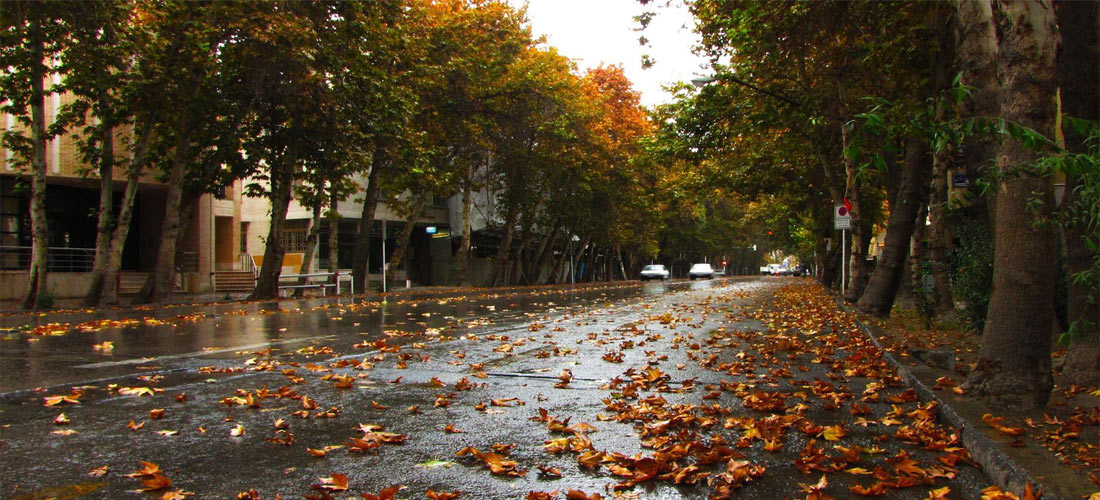
Tochal Complex
Tochal is a mountain in the Alborz range and a Ski Resort adjacent to metropolitan Tehran, Iran. The mountain has a 12 km long ridgeline. The highest peak, also called Mount Tochal, is at an elevation of 3,964 m (13,005 feet) and at coordinates 35°53′N 51°25′E / 35.88°N 51.42°E / 35.88; 51.42. Tochal is a popular recreational region for Tehran's residents. A gondola lift, named Tochal Telecabin runs from Tehran to the Tochal Ski Resort and the modern Tochal Hotel, all as a part of Tochal Complex.
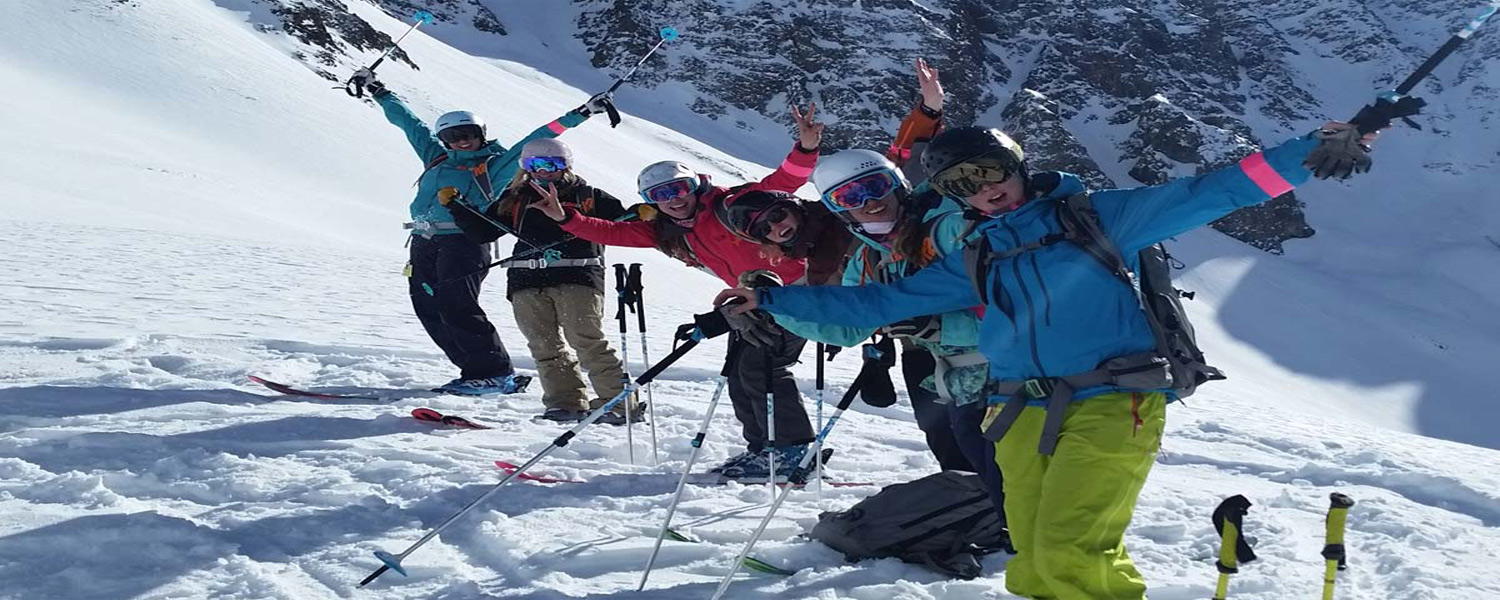
Tochal Gondola Lift
The construction of the Tochal Gondola Lift was launched in cooperation with the French company “Puma” and the Austrian company “Duplmeier” in 1974, and was completed in 1978.This gondola lift has three main lines and three lines of Chairlift. Altogether, the length of the main three gondola lift lines is nearly 7,500 meters, which is one of the longest gondola lift cable lines in the world. The speed of cabins on the cable car is 4 meters per second.
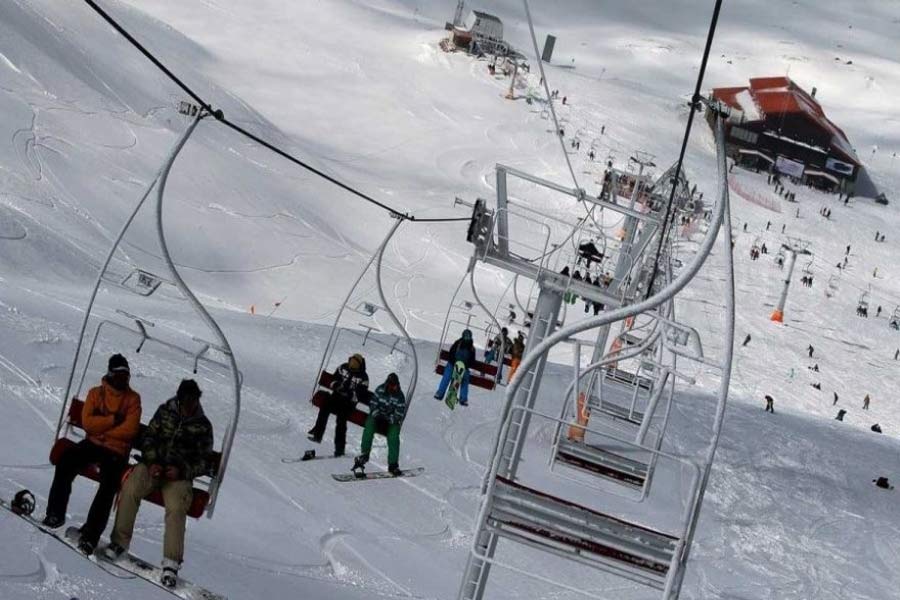
Ski Resort
This complex has 3 separate tracks as follows
7th ski resort (Peak)
The track, which runs from the bottom of the Tochal peak (3850 meters) and ends at the hotel (3,550 meters), has a chairlift device (Duplex Meyer). The length of the track is 1200 meters
7th ski resort (western domain)
This trail is located on the western slopes of Mount Tochak. The unique landscape of the surrounding mountains has given it a special look. The length of the track is 900 meters, with the highest point of 3750 meters and the lowest point of the hotel (3550 meters). This track, also, has a Puma chairlift system.
Ski track from 7th station to 5th station
The length of this track is nearly 5,500 meters, with the highest point of 3,750 meters and ending at a point at the fifth station at 2940 meters
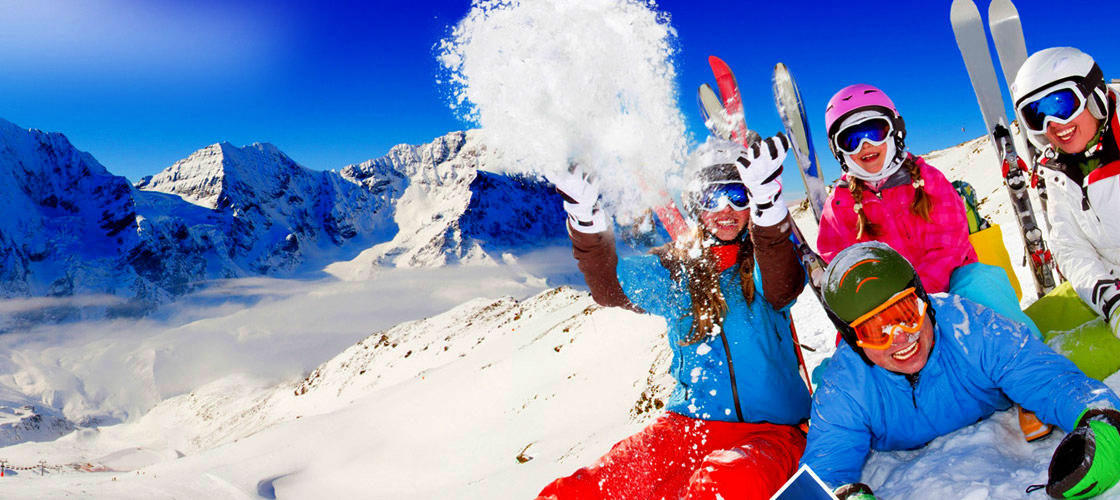
Tochal Sleigh
Tochal Sleigh is the second Sleigh of Tehran after the “ Tehran Sleight”, and also the longest sleigh of the country. It is located within the complex. Through this game you can ride on the roof of Tehran and experience the pleasant moments.